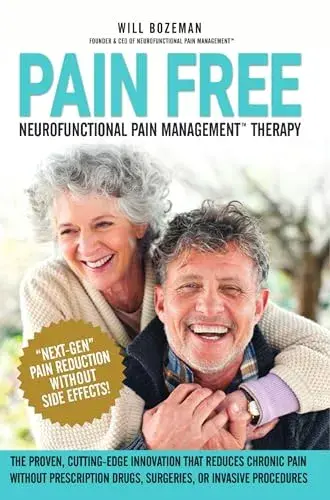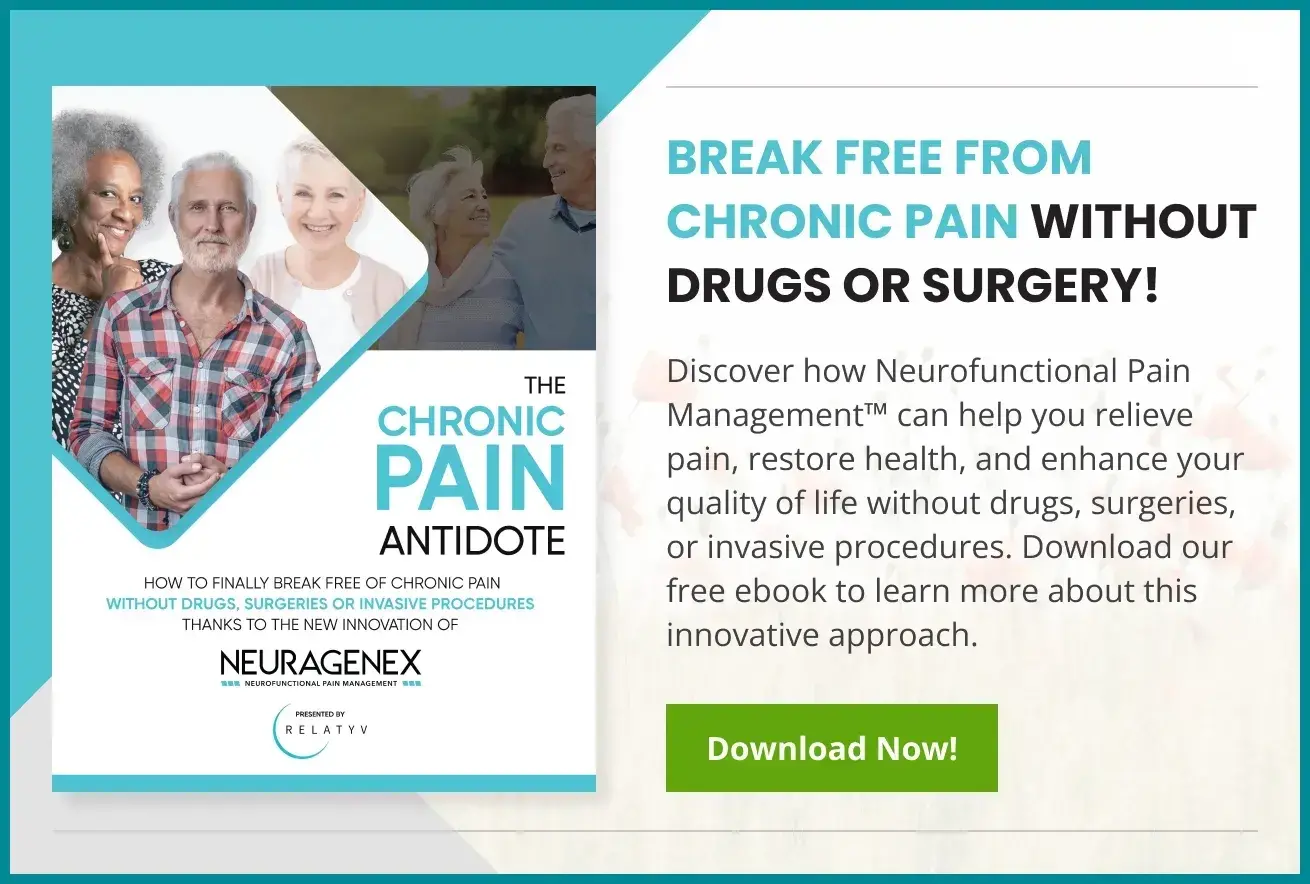Muscle, Tendon, Ligament Pain

TENS Unit For Ankles: 5 Reasons It Is Not Always Recommended
Read More
April 28, 2023
TENS (Transcutaneous Electrical Nerve Stimulation) is a popular pain relief treatment therapy. It uses a low-pulse electrical current (typically between 0 and 400 pulses per second) sent through the skin and into the muscles, creating a massaging effect that provides warmth and relief.
TENS therapy is both drug-free and non-invasive and can provide temporary relief from acute pain. However, that doesn’t mean TENS therapy suits every type of pain. For example, it won’t be enough to manage chronic ankle pain. For deeper insights into the limitations, this article discusses why a TENS unit for ankles is not always recommended.
TENS therapy involves placing electric pads on specific areas of the body experiencing pain. When activated, these pads send out small electrical pulses that create a tingling sensation.
These electrical pulses stimulate the nerve endings and block pain signals from being sent to the brain, thereby reducing pain and relaxing the muscles. The vibrations can also help to relax tight muscles and stimulate the release of endorphins, the body’s natural painkillers. All of this helps to provide immediate pain relief.
The following are a few examples of ankle conditions that can benefit from TENS therapy to provide temporary relief:
Electrical stimulation is proven to be effective at pain relief. Despite being one of the more popular forms of non-invasive treatments, there are certain limitations that come with using TENS treatment for ankle pain; whether you’re receiving TENS treatment at a doctor’s office or using a commercially-available TENS unit at home.
The following are the five main reasons why TENS therapy can’t be relied upon for long-term ankle pain relief:
TENS therapy works best when the electrodes are placed directly over the area of pain. For example, in the case of ankle tendonitis, the electrodes must be positioned around the tendon and bone to provide adequate relief.
However, this isn’t always easy to do with TENS because it relies on basic guidelines for electrode placement that may not be universal for all causes of ankle pain.
Furthermore, it’s possible that the placement will vary depending on the individual and their specific condition. As a result, if you don’t place the electrodes in the right place, you may not get the desired result. This can be especially tricky if you’re using an at-home TENS unit since a medical professional isn’t there to guide you.
Commercially available TENS units for home use typically only have a limited range of therapeutic wavelengths, which means that they can’t deliver as many electrical pulses to the affected area as is necessary for long-term pain relief. TENS therapy, in general, can only deliver up to 400 pulses a second.
At-home TENS units are even more limited and can only deliver up to 200 pulses a second. The reason it’s so limited is that more wattage is required to deliver an increased range of pulses, and at-home TENS units don’t have the capacity to do that.
Although this may be enough to provide short-term relief from acute pain, higher-pulse currents are required to bring about long-term relief from chronic pain. This is because high-pulse currents can stimulate deeper layers of tissue that might be the cause of chronic pain.
As a result, even with continued use, a TENS unit may not be able to penetrate deep enough to address the root cause of your ankle pain.
Using a TENS unit for pain relief can take more than 20-30 minutes per session to see results. This is because the electrical pulses delivered by the TENS unit have to stimulate the nerve endings and muscles for pain relief.
Unfortunately, because TENS units operate on limited wavelengths, it can take a while just to get temporary pain relief. If you’re experiencing multiple pain flare-ups every day, finding the time to undergo TENS therapy for that long isn’t very feasible, especially since relief generally only lasts for a few hours.
Additionally, the primary effect of TENS therapy is that the low-pulse currents help relax the area being treated, having a massaging effect that can improve blood flow, thereby temporarily reducing pain. On top of that, these currents can help block pain signals; however, the moment you remove the electrodes, the pain signals start to return.
TENS can also help stimulate the release of endorphins, but this is temporary as well. As such, TENS is similar to pain medication in that they do not address the root cause of the problem, they simply mask the symptoms. As such, they are not effective for long-term pain relief.
Although TENS therapy has been shown to provide short-term pain relief, there is no guarantee that it will be effective for long-term pain management. Countless studies have been done on the efficacy of TENS therapy on chronic pain conditions, and no consensus has yet been found. A few studies have found that there is some benefit, while others have found that there is none or that there is insufficient evidence to make a determination either way.
As such, it’s difficult to determine whether TENS therapy is effective in the long run or not. While many people claim to have seen positive results from TENS therapy, more research must be done to make a definitive conclusion.
However, due to the limited wavelength at which TENS units operate (especially at-home units), it’s unlikely that TENS can dramatically impact chronic pain relief over the long term.
Our Relatyv protocol involves a Neurofunctional Pain Management approach, which means that we combine multiple whole-person treatment modalities to treat the root cause of your ankle pain. Like TENS therapy, our pain management solutions are drug-free, non-chiropractic, non-surgical, and non-invasive.
However, unlike TENS therapy, our treatment solutions, which include electroanalgesia, nutritional hydration therapy, and lifestyle counseling, help provide long-term relief from chronic pain caused by various conditions, such as ankle sprains and tendonitis.
There are many forms of electrical stimulation, TENS therapy being one of them. However, we use electroanalgesia therapy instead. One of the main differences between the two forms of electrical stimulation treatment is that electroanalgesia uses high-pulse currents.
Compared to TENS therapy, which tops out at 400 pulses a second, our electroanalgesia machine delivers electrical current at 8,300 pulses per second.
Electroanalgesia is much more effective because it can target pain fibers in the neurons, thereby reducing the intensity of pain signals sent to the brain. It’s also more effective at stimulating the release of endorphins.
It’s worth noting that an at-home TENS unit can’t come close to delivering such a high electrical current because it requires a much greater voltage. As such, any electrical stimulation device that delivers more than 200 pulses per second isn’t safe for home use and needs to be administered by a trained medical provider.
In addition to electroanalgesia, we also use a form of nutritional hydration therapy as part of our Neurofunctional Pain Management approach. This involves injecting targeted nutrients and fluids into specific parts of the body to help reduce inflammation, stimulate healing, and provide long-term pain relief.
We tailor our IV treatment to each patient’s specific needs by evaluating their bloodwork to determine if any deficiencies or imbalances need to be addressed.
Nutritional hydration therapy is beneficial for anyone dealing with chronic ankle pain since IV treatment can help to reduce inflammation around the ankle, thereby reducing any associated pain. Additionally, IV treatment can help to accelerate the healing process by providing essential nutrients and fluids that promote tissue regeneration.
As part of our whole-person approach to pain management, we also provide lifestyle counseling and patient education. We believe that for any treatment plan to be effective, patients need to better understand their condition and how to best manage it.
That’s why we provide our patients with information about lifestyle modifications specific to their condition, such as improved nutrition and exercise, that can help to reduce their ankle pain and improve their overall well-being.
TENS therapy can be helpful when it comes to getting short-term relief from acute ankle pain. However, if you’re dealing with chronic or severe ankle pain, the Neurofunctional Pain Management protocol is a much more effective solution.
True electroanalgesia is more effective at targeting the root cause of your ankle pain to deliver greater, long-term pain relief than any at-home electrical stimulation device is capable of.
Combined with our nutritional hydration therapy and lifestyle counseling, the Relatyv protocol helps to better equip you with the tools necessary to manage your ankle pain effectively. It’s safe, effective, and designed to help you live a happier, more active life without the limitations associated with chronic ankle pain.
About the Author
Will is a healthcare executive, innovator, entrepreneur, inventor, and writer with a wide range of experience in the medical field. Will has multiple degrees in a wide range of subjects that give depth to his capability as an entrepreneur and capacity to operate as an innovative healthcare executive.
Share on Social Media




You can see how this popup was set up in our step-by-step guide: https://wppopupmaker.com/guides/auto-opening-announcement-popups/
You can see how this popup was set up in our step-by-step guide: https://wppopupmaker.com/guides/auto-opening-announcement-popups/
Neurofunctional Pain Management Overview
Symptoms
Conditions Treated
Treatments
Articles by Category
Locations
Colorado
Wisconsin
Georgia
Hiram
Lawrenceville
Marietta
Powder Springs
Texas
Waco
Victoria
Illinois
Buffalo Grove
New Lenox
St. Charles
Arizona
Tucson
Waddell
Arlington
Avondale
Buckeye
Superior
Mesa
Palo Verde
Morristown
Tempe
Chandler
Anthem
Eloy
Florence
Fort McDowell
Phoenix
El Mirage
Coolidge
Gilbert
Arizona City
Casa Grande
Casa Blanca
Aguila
Sacaton
Apache Junction
Kearny
Stanfield
Goodyear
Litchfield Park
Alabama
Arkansas
California
Florida
Idaho
Indiana
Iowa
Kansas
Louisiana
Maryland
Michigan
Rhode Island
Minnesota
Mississippi
Nevada
New Jersey
New Mexico
North Carolina
Ohio
Pennsylvania
South Dakota
Tennessee
Utah
Virginia
Washington

